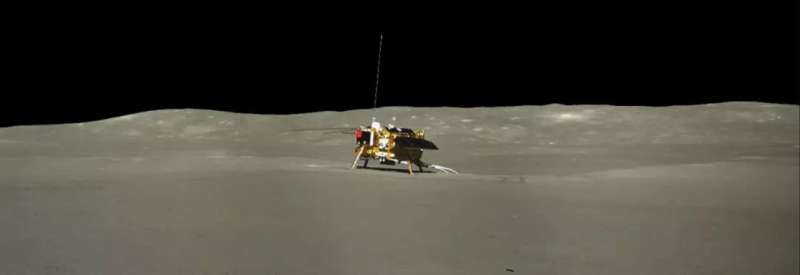Image: Chang'e-4 lander

At a time when ESA is looking forward to future lunar exploration, it turns out there is already some small but crucial ESA-developed hardware in operation on the far side of the moon.
China's Chang'e-4 lander is running on a LEON2-FT microprocessor core, especially designed for space missions by ESA and sold commercially by the Microchip company—marketed as the AT697.
The ordinary computer chips you use every day in your phone or laptop would be rapidly degraded by the radiation and environmental extremes of space. Specialised chips are therefore essential for spacecraft
Chang'e-4 touched down inside the Von Kármán crater on the moon's far side near the south pole on 3 January 2019. The lander and the rover it delivered are currently hibernating during the lunar night, having survived seven month-long lunar days so far.
"Most ESA missions launched after about 2010 include at least one LEON chip, and hundreds of these radiation-hardened off-the-shelf chips have also been sold to space missions both in Europe and around the globe," explains ESA microelectronics engineer Agustin Fernandez-Leon.
"This number increases to the thousands if we additionally count customizable fully programmable gate arrays using LEON cores," adds ESA microelectronics engineer Roland Weigand. "The overall scale of usage is such that it is impractical to keep track of all the missions making use of our microprocessor technology, but it is always nice to find out."
Israel's ill-fated Beresheet lander—which made it most of the way to the lunar nearside before crashing—similarly utilized a GR712RC microprocessor, powered by two LEON3 cores. In this instance their design was not developed by ESA itself but privately funded by Sweden's Cobham Gaisler company, advancing the existing LEON architecture.
Provided by European Space Agency





















